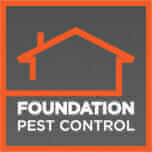Difference Between Centipedes and Silverfish
Centipedes vs. Silverfish: How to Identify & Control These Common Household Pests in Memphis
When you spot a creepy crawler zipping across your floor, it’s easy to assume the worst. But is it a centipede or a silverfish? While both are common household pests in Memphis, they’re quite different in appearance, behavior, and the way they interact with your home.
In this guide, we’ll break down the key differences between centipedes and silverfish, how to identify them, and the best methods for keeping them out of your house.
What is a Centipede?
Appearance:
The centipede is easy to spot thanks to its many legs—sometimes up to 177 pairs! The most common type you’ll find indoors is the house centipede, which grows up to 1.5 inches long. They have long, thin legs, a grayish-yellow body, and dark stripes running down their back.
Behavior & Diet:
Centipedes are nocturnal predators. While they might look scary, they actually help control other household pests like spiders, cockroaches, and silverfish. Using their venomous front legs (called forcipules), they immobilize prey before devouring it.
Preferred Habitat:
Centipedes love dark, damp environments, making basements, bathrooms, and crawl spaces their favorite hangouts. They’re often found lurking under sinks, in bathtubs, or inside damp closets.
✅ Are Centipedes Dangerous?
Not really. While house centipedes can bite, it’s incredibly rare and their venom isn’t harmful to humans or pets. Most people find them more creepy than threatening.
What is a Silverfish?
Appearance:
Silverfish are named for their shiny, metallic gray bodies and swift, fish-like movements. They’re smaller than centipedes, typically measuring about 0.5 to 1 inch long, and have a teardrop-shaped body covered in tiny scales. Their long antennae and three tail-like appendages make them easy to identify.
Behavior & Diet:
Unlike centipedes, silverfish are not predators. Instead, they’re scavengers that feed on starchy materials like paper, glue, book bindings, wallpaper, and even some fabrics. This makes them a threat to bookshelves, closets, and storage boxes.
Preferred Habitat:
Silverfish thrive in humid environments, often found in bathrooms, basements, kitchens, and attics. They hide in cracks, crevices, and dark corners, coming out at night to feed.
⚠️ Are Silverfish Dangerous?
While they don’t bite or sting, silverfish can cause property damage over time. Their diet of paper, fabrics, and adhesives can leave behind holes in books, wallpaper, and clothing.
Centipedes vs. Silverfish: Key Differences at a Glance
| Feature | Centipede | Silverfish |
|---|---|---|
| Body Shape | Long, segmented with many legs | Teardrop-shaped with silvery scales |
| Legs | 15-177 pairs of long legs | 6 legs with 3 tail-like appendages |
| Color | Grayish-yellow with dark stripes | Shiny silver or metallic gray |
| Diet | Carnivorous (feeds on insects) | Starchy materials (paper, glue, fabrics) |
| Habitat | Damp areas (basements, bathrooms, crawlspaces) | Humid spaces (attics, closets, kitchens) |
| Threat to Home | Minimal (helps control other pests) | Can damage books, wallpaper, and fabrics |
| Speed | Fast, especially when hunting prey | Quick, darting movements |
How to Get Rid of Centipedes and Silverfish in Memphis
Both centipedes and silverfish thrive in humid environments, so controlling moisture in your home is the first step to prevention. Here’s how to keep these pests at bay:
💧 1. Control Moisture Levels
- Use dehumidifiers in basements and crawl spaces.
- Fix leaky pipes and faucets.
- Ensure proper ventilation in bathrooms and kitchens.
🧹 2. Keep Your Home Clean & Clutter-Free
- Remove piles of paper, cardboard, and books that silverfish love to snack on.
- Regularly vacuum and dust to eliminate food sources and hiding spots.
- Seal cracks and gaps in walls, baseboards, and around plumbing.
🐜 3. Use Pest Deterrents
- Apply diatomaceous earth in areas where pests are common.
- Place sticky traps near baseboards and behind furniture to catch centipedes and silverfish.
- Use natural deterrents like cinnamon, cedar oil, or clove oil to repel silverfish.
👷 4. Call a Professional Pest Control Service
If centipedes or silverfish have taken over your home, DIY methods might not be enough. A local Memphis pest control expert can inspect your home, identify problem areas, and apply targeted treatments to eliminate the infestation.
When to Call a Pest Control Expert in Memphis
- You notice multiple centipedes or silverfish in different areas of your home.
- DIY treatments aren’t stopping the infestation.
- There’s noticeable damage to books, wallpaper, or clothing.
- You want a long-term prevention plan tailored to Memphis’ climate.
Protect Your Home from Centipedes & Silverfish Today!
Don’t let these creepy crawlers make themselves at home. At Foundation Pest Control, we offer expert pest control services in Memphis to eliminate centipedes, silverfish, and other common household pests.
📞 Call us today at (901) 302-5206
🌐 Schedule a free inspection: foundationpestcontrol.com
FAQs About Centipedes & Silverfish
1. Are centipedes good for my house?
While their appearance is unsettling, centipedes help control other pest populations like cockroaches and spiders. However, most homeowners still prefer them gone!
2. Can silverfish damage my home?
Yes! Silverfish feed on starchy materials like paper, glue, and fabric, which can damage books, wallpaper, and clothing.
3. What attracts centipedes and silverfish to my house?
Humidity is the biggest draw. Leaky pipes, damp basements, and cluttered storage areas provide ideal hiding spots.
4. What’s the quickest way to get rid of centipedes and silverfish?
Reduce moisture, seal entry points, and use pest deterrents. If the problem persists, contact a professional pest control service.

